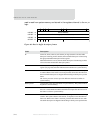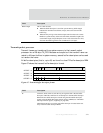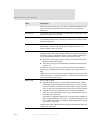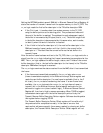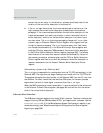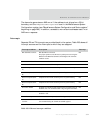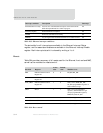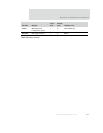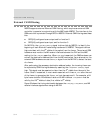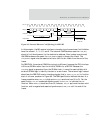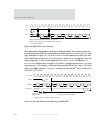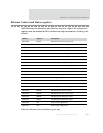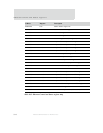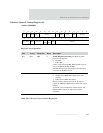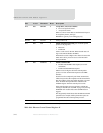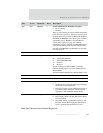
External CAM filtering
334
NS9750 Hardware Reference
External CAM filtering
NS9750 supports external Ethernet CAM filtering, which requires an external CAM
controller to operate in conjunction with the MAC inside NS9750. The interface to the
CAM controller is provided through GPIO in NS9750. External CAM filtering uses these
bits:
GPIO[19] configured as an output and for function 0
GPIO[18] configured as an input and for function 0
For MII PHYs, the
CAM_REQ (GPIO[19]) signal is driven high by NS9750, to identify the
beginning of each Ethernet frame being transferred to NS9750. The signal is driven
high coincident with the 6
th
nibble of the packet from the frame. The external CAM
hardware must monitor the MII receive interface between the PHY and the MAC
waiting for the CAM_REQ assertion. When CAM_REQ is asserted, the CAM hardware can
extract the destination address field from the MII receive bus. As an alternative, the
external CAM hardware can use the
RX_DV signal from the MII PHY to detect the start
of a frame.
After performing the necessary destination address lookup, the incoming frame can
be rejected by CAM filtering hardware by asserting the
CAM_REJECT (GPIO[20]) input
high. This signal must be asserted no later than the 4
th
nibble from the end of the
frame. Once it is asserted, it must remain asserted until three
RX_CLKs after the end
of the frame, to guarantee that the
RX_WR logic has captured it. For example, a 64-
byte frame contains 128 nibbles of data on the MII interface.
CAM_REJECT must be
valid by the 123
rd
nibble of data (first nibble is 0
th
nibble).
Figure 68 shows the timing relationship between the
CAM_REQ, CAM_REJECT, and MII
receive interface signals when using an MII PHY.



